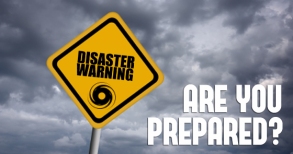
Behavioral economics provides some clues.
In fact, behavioral science has contributed much to the understanding of decision-making in the last few decades. It has revealed that our perceptions, preferences, choices and behaviors are often influenced by heuristics and cognitive biases. Research on the psychology of natural hazards and decision biases influencing hazard mitigation has been driven by Howard Kunreuther, Robert Meyer, Erwann Michel-Kerjan at the Wharton Center for Risk Management and Decision Processes at the University of Pennsylvania. Their analysis of the decision-making during natural disasters – mostly in the US context – has found that key behavioral biases and heuristics, play a great role in people’ reluctance to invest in mitigation measures. In their chapter (Kunreuther, et al., 2013) identify eight psychological biases and situational barriers that shape such decisions and hence limit people’s willingness to invest in hazard mitigation measures.
To better understand why residents often act against their own interest and underprepare for natural disaster, let’s attempt to address the following questions: (1) Do residents in hazard-prone areas feel at risk? (2) Are they good forecasters? (3) Will they procrastinate?
(1) Do residents in hazard-prone areas feel at risk?
Well, the residents’ perception and response to future disasters is greatly influenced by the way they construe those events over time. Residents’ safety (and hence their need for risk prevention) is often recognized as a desirable goal (Higher-level construal). However, is safety worthy of investment? Crudely, yes it is. Nonetheless, such investment becomes unfeasible as soon as hazard mitigation is framed as a near-future (lower-level construal) undertaking (Liberman, 2003). In fact, for many residents (landlords and tenants), installing mitigation measures might not be affordable in the short-run. They tend to overweight upfront mitigation costs and value their outcomes differently over time.
Are they good forecasters? (3) Will they procrastinate? (To be continued)


